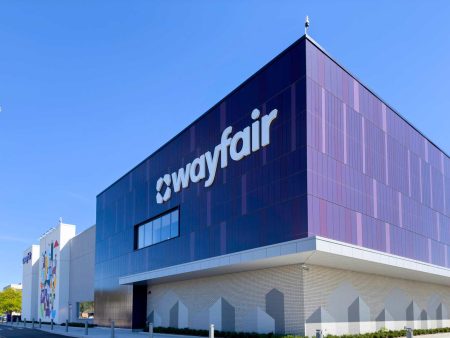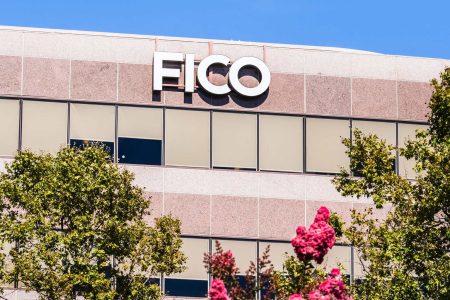Affirm Holdings, Inc. (NASDAQ:AFRM) Goldman Sachs Communacopia + Technology Conference 2024 September 11, 2024 4:45 PM ET
Company Participants
Max Levchin – Founder and CEO
Conference Call Participants
William Nance – Goldman Sachs
William Nance
All right. So we’re going to kick it off today. Very excited to have Max Levchin here, Founder and CEO of Affirm, who just put up a series of really strong quarters. Closed out the year, now guiding to around 30% GMV growth in fiscal ’25. Expect to exit the fiscal year profitable on a GAAP basis. How would you frame the top strategic priorities for you and the management team over the next 1 to 2 years?
Max Levchin
I’ll take a second. But first I owe you all an apologize. Sorry, it’s entirely my fault that I showed up late. I hope did not get too bored in the [interceding] (ph) 5 minutes, but please forgive my tardiness. So as far as our goals are concerned, one thing that sort of fits in the letter, I say it a little time, I’ll say it again, just for those who care, there is nothing unnatural about the results we posted and the forecasts we make and the GAAP profitability. No changes were made to how we run the business or what we thought we needed to do.
Like the only reason we said, hey, we’re going to be go profitable by the end of the fiscal year, is because it’s so close. We have a very high degree of confidence that will actually happen, and there’s nothing that’s going to be a bump in the road. But there was no contortions involved in getting to this particular set of good quarters, just to get execution. And so within that framework, what it takes to continue executing at this rate or to get to these goals. Number one, consumer engagement, one way of framing the opportunity we have is frequency. If you look at all the metrics and we put a lot of really good data in the last letter, there is about 40-plus million consumers that we’ve touched in a fairly deep way. We’ve underwritten them. The number is actually larger now. It keeps on growing very quickly.
Of those on the order of $19 million transacted in the last 12 months, if you widen the window to 18 months, that number jumps if you widen it to 24 months, it goes even higher. So we are still the dominator in the considered purchases. These are the things that get purchased once every few months, not once every few days. At the end of the movie, we want all transactions or at least a majority of the transactions. But for now, we are just chipping away at getting to five transactions per year average and then 10 and then 15, et cetera. So consumer engagement, and that’s all the consumer products we have built that we haven’t shown yet as well as the card, obviously, et cetera.
So there is just a lot to do on the consumer engagement, we’ll keep at it. To sort of even more obvious we are at 300,000 merchants, but we want to be at every merchant. We need to get to more geographies. We need to get on two more surfaces more wallets. One of our big themes for the last few years has been just be in every important wall. And so that’s scaled the network reach. And that’s also how we acquire users. We don’t pay ITAC because our merchants and our platform partners promote us to their providers.
And then finally, maybe — could have started there. One of the more rewarding moments of last earnings call was we — I don’t think we have to field a single credit related question, which is sort of like, finally they believe us. And the belief is only as good as the next quarter where we have to continue printing numbers that are not just pretty good, but we think at this point, the best in the industry. So credit remains job Number #1. We’ll continue watching credit like hawks. We are prone to experimenting with such things. So we will never commit to here’s the exact number we’re going to do. But we have the capability to actually print the credit numbers that we want to print versus having to be recipient of outcomes like some of our less underwriting focused competitors. And so the 3% to 4% target remains.
We’re going to just stay within that lane. And it is sort of the Goldilocks zone, so it’s not a randomly chosen 3% to 4%, above 4%, we are not approving enough people and become vulnerable to competitive threats and below three, the operating leverage doesn’t quite up to what we need it to be. We do rotate chair, so I don’t look away from the microphone. There you go.
Question-and-Answer Session
Q – William Nance
All right. So you mentioned the really efficient customer acquisition. Your partnership strategy has been a huge part of that. It seems like a firm has really become the partner of choice for the large e-commerce platforms and also the wallet, and you have announced some really interesting wallet partnerships recently. Why do you think these partners keep continuing to select the firm? And how do you think about the strategy going forward?
Max Levchin
Couple of good reasons that have remained true from inception. I think, number one, we treat their customers, at least as well, maybe better than they do. Like we will never be a source of embarrassment. We will not be the nasty payments provider that overcharged or hit some fees or anything like. So the fact that we are so fundamentally pro consumer, and yet a merchant-facing service has allowed us to be a really great partner of the Founder, CEO level, the marketing head level. People look at us and say, yes, this is a good company to work with. They’re not shady. They’re not going to be on some page being taken apart for their lack of consumer treatment. So that’s always the foundation.
We are — I used to say this and at this point, I’m the last one left, but one point, 15 years ago, we had four co-founders and all of us had computer science degrees. We built this thing with technology as a first and foremost foundational piece. And when you partner with the likes of Amazon, Walmart, Target, like really huge enterprises that have a lot to lose and are very demanding as far as scalability, ability to handle peak from prime days to Black Fridays. You have a lot of pressure on performing and standing up even through all sorts of weird spikes of demand. And so being a tech first and known tech-first company has helped us win some of those partnerships.
We are the only ones in the industry at this point that have to the test of time with breadth of products. We’ll cover anything from pain 2, 2 hits and 15 days each and all the way to pay over four years. If you are going to partner with someone, you are going to do the technical lift to integrate, you might as well find someone who’s going to offer every possible version of pay overtime versus paying for it from you and paying fixed from that. So that’s kind of the core reasons. I think there is a little bit of a domino effect where I think at this point, we are a bit of a, well — no one gets fired partnering with a firm, which is I can’t believe I would say that, but — so it’s a bit of an IBM reference for those who go far enough back.
Actually, one other thing, it is less of a matter for a huge established companies like Amazon, but absolutely an important thing for mid-size enterprises and down. We have this giant user base that trusted us and seen us installed at the merchants they visit all the time. So they know we were picked by their favorite general merchandise retailer. That automatically means that they can probably trust us. And that group follows us around. So when a merchant picks a pay-later provider, they say, well, who will bring us the largest trucking installed base at this point in the US, we got it.
William Nance
Yes. It makes a lot of sense. Now you compete with other pay-later providers at some of your largest merchants and wallet partners, how do you feel firms positioned competitively in the sort of side-by-side situations? And what factors enable do you win in terms of tender share?
Max Levchin
I think numbers speak for themselves. We’re growing faster than anyone last quarter, last I checked and certainly going back a bunch of quarters. So I think we’re taking share. I think inside kind of a multi-tenant type scenario where the merchant feels they need to show several logos it actually makes a lot of sense to me if I were a seller, I would say, well some people have preferences for Visa, and some people have preference for American Express and I’d be stupid to say only Visa can come. So I expect the world to be multipolar. None of our competitors are going away any time soon, the ones that survive the most recent trough, I think, they are all going to be just fine.
Each one of us has a different flavor of products, and H1 has a different audience that we attract. If you look at any overlap study, you can see that we don’t really overlap that much with the rest of our [co-competitors] (ph) in this market. because each one of us spoke to a different set of initial merchants, but also spoke in different language even the sort of the brand positioning of what we stand for, the honest financial products, exactly what you’re going to pay. You have a very clear understanding that there will be no fees if you are going to be down, we’re not going to kick you. And it’s very different. I don’t think any of our competitors position themselves as hey, will charge late fees, but of the major ones we’re the only ones that don’t.
The positioning there sometimes can be more like, hey, it’s simple indulgence go, afford something over time that you should buy our posture has always been feel good about the purchase you just made. Like we are here on your side and you will feel great putting down the credit card and choosing a firm. And so that has after a decade of trying, I think, permeated enough people’s minds that it does hold its own with without a side-by-side competitor. But then the other piece, ultimately you are as good as your next conversion for the merchants we serve. And we just continue iterating on being higher converting better approvals, better terms, more automatic matching from sort of the price and the item to the correct term, having lots of products helps find the right term and the right load.
William Nance
And then just in terms of the market structure, I mean, firm is also one of the only pay later providers with the kind of sophistication you often highlight the transaction level underwriting to underwrite longer-dated loans, many of your competitors are sticking to the Pay-in-4 products. So where you think the market is going in terms of the mix maybe in the shorter-term versus the longer dated products? And how does that — what does that mean for Affirm?
Max Levchin
So I think being a pure-play paying for. So BNPL for me has always been Pay-in-4 the terms got briefly co-mingled, but happy to hear you say pay later. I think that’s the industry. BNPL is the thing that After Pay invented. And I think that’s always been a bit of a feature that made something else makes sense and requires something with real margin to make sense. And the acquisition by Square was not an accident. I think Klarna has a construct that allows them to underprice and not care about making money perhaps at all on these Pay-in-4 transactions because there’s just an advertising engine underneath that just resells that user to other merchants, et cetera.
And so I think not criticizing not my place to decide those are bad businesses, but I love ours. And ours is built around the idea that every transaction has to ultimately make sense financially for us, just as its own thing as opposed to — there will be some other way to monetize it later. The only way to make that work is the only way to be a pure-play financial provider of payments in the space therefore is to have a wide variety of products because ultimately, in lending, you make money in the opposite of time value of money that is charging interest. And so if you’re saying the only way we’re going to do Pay-in-4 is with no interest at all in a competitive market, the merchants are not going to continuously up the amount they are going to pay. They’re going to continuously reduce it.
So in that world, you have to have the capacity to go longer, to charge interest and to create these complex relationships with merchants where sometimes the interest is zero, it is not because you’re eating the cost, it is because the merchant or the manufacturer is subsidizing the transaction, which is another thing we sort of built out a giant practice out of. And so I feel great about our competitive posture there because we have 15 years of both the data and integrations to power it. I think I prefer this business to the ones that sort of say, well — we’ll get point A so that we could layer — make money on point B. We did the hard work of saying, we’re going to do this thing, and we are going to do it across old possible card sizes and make money in everything. So that’s our approach to it. I’m not sure how others will do it.
William Nance
So you talked about the 15 years of data. Talk about the transaction level underwriting, the moat around that, what it takes to stand that up. And what kind of lead this gives you?
Max Levchin
I’m naturally both very competitive and very paranoid. So I think it is a potentially insurmountable lead in the moat, the depth of Mariana Trench that I am constantly stressing is not deep enough in the [wallet] (ph). We are constantly trying to get smarter, get better, find another little improvement to the area into the curve, so on and so forth. And so the data is real. I mean going back 15 years of lending we’ve seen enough bumps. We’ve not seen any true bad recession. So I’m part of why I’m so pleased people aren’t asking us about how good your underwriting really is there’s been enough turmoil that sort of — it stands in for a real downturn. In 15 year it gives you a lot. SKU level data we get in a lot of our transactions really helps because he can start discriminating on not just sort of who do you think you are set to borrow this money, but also what do you think you are going to do with that type of questions. And so the other part that we don’t talk about very often, but is really important. You can’t build a sizable, which at this point, we’re lending business without being a bank, note how great you are underwriting without a massive capital market effort. And right alongside all of our data gathering and model development and process development for model validation, et cetera, we’ve been marching along a process to find capital at the right price all these years. But from day zero, we’ve always said we’re not going to hold our breath and hope the market don’t seize up because they did in [’08] (ph), they did in ’91, et cetera, in 2001.
And so as we went along, we had built up enormous number of relationships, very deep, seeing us through crazy rate hikes a few years ago and everything in between. That is also a huge part of the moat. Tomorrow morning, any one of our competitors are saying, we realize that you can’t just run this business on a pure pain for. We got to go into monthly installments. A root awakening of like, wait a second, we are going to give the next $20 billion of fundable capital without some kind of obscene rate.
Starting that business now is 5% roughly more expensive than it was when we did. And so I think that’s a pretty good moat. The most important piece — sorry, I can’t stress this enough, the team and the reps around building, deploying, testing, validating models, but there is no shortcut. So I spent a lot of my time still staring at that stuff, although we have some people way better than I can ever be and from guess, for two days ago, I was in one of these model group meetings and someone was looking through essentially a continuity analysis where there’s a digital quark in the model saying, this looks weird. And 24 hours later, there was a massive investigation. And in this end-dimensional space, there was a tiny but real discontinuity, which 10 years ago, I would have been like, oh my god, like what have we done? Like this could be millions of dollars. In today’s world, it could be $10 of millions of dollars and yet I did not — my heart rate did not increase at all because I know exactly what our process for such things are.
So that model is deployed in some champion challenger context in like sub-1% or that’s a 12th major version of the point-of-sale model. And so like I know before the person spoke, that we’ll deploy the next version of this thing after this bug is fixed before Black Friday. And so like the forecast built on the performance of that model, which is another few points better performance in POS the 11 is going to happen, whether this bug existed or not. The reason this is so important is you have to have the cadence and the team and the confidence to say, even if they create bugs because humans always do, it will not disrupt our flow. So getting into that business, if you’re tiny, you can make those mistakes because you have nothing to lose, and that’s what we did 15-ish years ago.
If you get into that business today, and you have billions of dollars to lose, good luck convincing capital markets that you’re good at it, but also good luck convincing yourself like you don’t want to take the risk.
William Nance
So I’m going to disappoint you and ask you a question on credit.
Max Levchin
That’s okay. I Actually — it’s one of my favorite topic. I was a little disappointed nobody asked me on the call.
William Nance
So I’ll look maybe a look back over the last couple of years. So a firm has seen very consistent loss rates, much better than the industry. But broadly speaking, it seems like industry credit quality did begin to weaken in 2022. That’s starting to level out today, hopefully, at least. What did you see in real time? And how did you guys adjust when that was occurring?
Max Levchin
So ’22 is now about 1,000 model years back in my head. So it takes a few seconds to fully recover the tape. So there was a very noticeable shift right around the tax season of ’22, where we thought certain performance metrics would move back from a local seasonal peak than they did not. And so we acted exactly the way you would expect us to act sort of look for pockets of underperformance, isolated it reduced approvals, et cetera, and we are very careful AB tested the results to make sure we’re not lopping off volume, we don’t want to lose, et cetera. And so I think at the time it was more than anything a consequence of sort of post-pandemic resettlement of sort of people coming back to the workforce, finding their jobs aren’t available. I mean also just social theories as to why this happening. It almost doesn’t matter. We were able to react, if anything, in retrospect, I sort of wish we had reacted a little bit quicker, but it’s a great in comparison.
A lot of people are like, well, god, what just happened to us. I don’t want to name their names, but they’re still dealing with those vintages, I think. We are long past having to worry about that at all, mostly because the weighted average life of our loan is still between four and five months. So half the volume is done before the quarter is out. And so the — as of 24 hours ago, the conversation is back on what’s going to happen to the US consumer. The one thing — I was reading the transcript of our friends and colleagues at Ally. And sort of the thing that jumped out at me was, well, last few months, things have sort of deteriorate slowly. Like I want to reveal anything that I’m not supposed to reveal now, but from our point of view, last couple of months, our performance improved.
And it’s not an accident, but I can speak to that one as a property because we have not needed to tweak anything beyond kind of a standard marginal movement. And so I think the specific thing in subprime auto that Ally is calling out, I’m sure is real and undoubtedly a thing that they have to contend with. I’m sure there’s overlap between all the user bases everywhere. That said, from our advantage point, the US consumer is doing fine. I wouldn’t qualify it as a rolling in its spending government check, like nothing of that sort. I think it’s fine. I don’t think it’s amazing. But I don’t think it’s weak. I don’t think it’s falling off a cliff.
I think unemployment rate is okay. I wish it was not going up. It would be nice if it was flat or going steadily down, but it’s still in a very reasonable place. And as of this morning, the inflation print seems turning towards the right direction. So assuming all things land well, I’m not as afraid of stagflation as it was maybe last night, listening to [Mr. Dan] (ph). But I still do think it’s a possibility. And I think we will be prepared no matter what happens. The short term that we have ability to underwrite every transaction understanding with our consumer that we underwrite every transaction and sometimes the answer may be you’re overextended. I’m sorry, but we can’t lend you money, keeps me well asleep at night.
William Nance
Great. So I saved some of the best for last here. I wanted to switch to Affirm card. It’s been a new avenue of growth in the business. I know it is something you’re personally extremely passionate about. So I’d love to get your take on just a few things. One, just getting more of the everyday spend, the Pay Now transaction and covering the full suite of product duration from kind of immediate payback all the way to one-year loans. And then second is a firm card as a wedge into POS and off-line transactions.
Max Levchin
Yes. So I’ll start backwards and I tend to give longer answers that I plan on giving. So you’ll have to — you may have to remind me of the first half. So the card is a unique product. It’s still growing great and option is fantastic. The retention rates on the card are probably the best product retention I’ve ever built and maybe the best one I’ve ever seen. I’m sure there are legal drugs probably retain a little bit better but not a lot there because it’s in the high 80s. And so — we have lots of work to do. There is still plenty of things to do better about the card, but it has hit the product market fit pretty much after three short years of product development.
Off-line value in the card is pretty awesome. Being able to say, hey, I’m walking into the store. I’m not going to explain this firm thing to a random cashier. I’m not going to ask to type in some digits off my screen, I have a card. It’s preloaded, I’m ready to go buy this expensive TV, kind of tap my card, walkouts and it’s going to be a loan and it really is a pretty beautiful consumer experience. The secondary part of it is really cool even though you didn’t ask, at some point, I will show up on a doorstep of the CEO of that retailer and say, hey, you don’t know who I am or maybe you do. But here is the number of transactions I just powered for you with my card you should pay for some 0% deals because the speed with which those TVs will get sold is so much better if it is interest-free or reduced interest or some sort of subsidized card intrinsic deal that we can arrange.
And by the way, you should obviously build listen to the point of sale directly so people actually know were available even before they reach for their [firm part] (ph). So that’s a — it’s been both a great way to deliver conversion to merchants. And convince merchants to sign up for Affirm, even if they never sort of snooze on the whole Pay Later revolution. On the Pay Now side of things. There is a few more things we need to get right before that becomes the — obviously the right thing to do. So the way I generally think of products you have to deliver something to the customers. I’m going to building utilities. And I think the company generally is going to build the utilities, a bunch of engineers, myself included. Not the very best of design, not the very best at marketing God knows, but we’re really good at making very good solutions for people’s everyday problems.
The solution that is the car solution that is the Affirm’s loan for each thing I’m going to have to pay over time, and I hate the lack of understanding of how long it’s going to take and how much we’re going to pay, what we deliver really worked? And I’m not sure we invented the industry, but we certainly made it big. The idea of — I’m going to put down my card — my credit card, and I’m going to use a firm for this TV or this bicycle or this couch or anything considered is, at this point, indisputably the growth speaks to it, but also just reasoning about it very quickly, like, I’m paying fixed interest that’s better than evolving. I’m paying no interest better than any interest at all.
I can always find a deal that really resonates with me as I look at the brand that I want. So Pay Later, I think we sort of nailed the product market fit at the utility level. Pay Now, it’s you to nail it for the merchant. You can just charge them less than credit card charge, and it duly a very useful thing for them. You have to nail the value prop for the consumer. The shortcut which, as engineers, we do not take shortcuts would be to give everybody free money. So here’s 2% cash back or here’s a really cool TV commercial. But there’s a better way. I think we are pretty hard at work building that better way. Some of the things we’ll launch pretty soon. Once the Pay Now mode is obviously the right thing to do for the utility to the problem that we’re trying to solve. I think it will naturally trend towards that.
There’s not a ton of money in Pay Now. Pay Now is ultimately a reminder mechanism to drive retention, usage, muscle memory. I’m always going to use that product. But it is solving a problem. You are still buying coffee, not hopefully, with interest in mind, which by the way, every time you revolve in a credit card or buying coffee, you are paying interest for the cup of coffee. PSA don’t do that. We think we have a better way Affirm money account to serve a glimpse into why we think that could be a really great utility. We’ll know — and it’s growing well enough where we can see the proportion is remaining, but it’s solving a problem for Affirm devotees. We need to bring Pay Now functionality to sowing a problem for everyone. And I think that story will write itself.
William Nance
Yes. That’s great. Look, I know I got about a minute left. I mean I want to just maybe leave it with you. Could you talk a little bit about the long-term vision for the company? Where does this company land in 10 to 15 years? That’s forever away, but what is your vision?
Max Levchin
I think we want a right to play a role in every transaction without qualification. I think not every transaction will make sense for us today for sure. Pay Now is the next hill. I think some transactions, we don’t do any secured lending which there are some good reasons not to touch that, but there’s some great reasons to go disrupt that too. And so in the long-term, nothing is off the map. I have an enormous amount of admiration for American Express. I think it’s probably the best payment brand at the sort of the global level.
So when you started the company and I was struggling to do a 15-second description and say just imagine, Amex was rebuilt from the ground up by a bunch of really good engineers with no 100-year [code debt] (ph). And as good or better in treating its customers. So that’s still kind of the short hand, like just trying to build another network that is as good and as customer-friendly as Amex. Minus the technical debt and sort of minus the velvet rope. Like we are the other 99%. A lot of people in this room probably take a lot of pride in their black or platinum dynamics. And that’s probably going to be the last adopter of Affirm, and that’s okay, like we’re very happy to serve the remainder.
William Nance
Got it. That’s great. Well, Max, I really appreciate the conversation today. It’s a pleasure having you.
Max Levchin
Thank you.
Read the full article here













